A pragmatic choice – that’s where I think we can all agree when it comes to Voigtländer lenses. The company has issued two lenses in popular focal lengths recently that seem particularly reasonable. The Voigtländer Color-Skopar 28/2.8 and Ultron 75/1.9 duo is small, lightweight, and affordable. So, a perfect rangefinder lens kit, for example for travel?
The innovation engine at Voigtländer/Cosina seems to be running smoothly. Every year, the company brings out a couple of new M-Mount lenses. Many of them seem to be aimed at the working photographer. No fancy technical specifications, hardly a one-trick pony. The Voigtländer Color-Skopar 28/2.8 and Ultron 75/1.9 are two perfect examples of this approach. They are not superfast, and they have nothing else spectacular about them. But at a moderate price, they address the needs of many rangefinder and other photographers that Leica can’t cover with its positioning in the luxury segment.
Voigtländer Color-Skopar 28/2.8 and Ultron 75/1.9 – a good match
I used both lenses over a long period of time, mainly as a kit. The 28 is, in my eyes, the most versatile “halfway wide” focal length on rangefinder photography — I am not a big fan of external viewfinders and even less of live view composing on the stretched arm. The 75 covers, for me, a sweet spot as a lightly longer normal lens, and with the f/1.9 maximum aperture, it offers a great potential to play with focus. In terms of focal lengths, the 75-degree and the 32-degree angle of view make for a good team (the 28-70 zoom was a standard for a long time for good reason).

In a way, the kit reminds a bit of the 21/1.4 and 75/1.5 combo I reviewed in The M Files, episode 20. Agreed, a 21 is a different kettle of fish from a 28, and the “poor man’s Summiluxes” are, of course, substantially bigger, heavier and pricier than their slower siblings. But the approach is similar. I used the Voigtländer Color-Skopar 28/2.8 and Ultron 75/1.9 mainly with the M10 and M10 Monochrom, the latter being my reference camera for resolution. For some additional testing, the SL2 was used. All photos were taken without in-camera correction profiles.
Both 28 and 75mm have quite a history, not only for Leica
The Voigtländer Color-Skopar 28/2.8 and Ultron 75/1.9 have a long parade of ancestors. Both focal lengths can now be called rangefinder classics. The Leica M4-P from 1980 was the first camera to incorporate frame lines for these focal lengths, and Leica has had at least one 75mm lens in the line-up continuously since the launch of the Summilux 75 in 1980. The 28mm focal length has an even longer history in the Leica world. According to Erwin Puts, the first 28, a Hektor, was released as early as 1935.


Voigtländer Color-Skopar 28/2.8
Technical data, scope of delivery, price, and availability
The Voigtländer Color-Skopar 28mm F2.8 — to use the full name as engraved on the front ring this one time – was launched in July 2023, and it is available in four different varieties. Type I has a more nostalgic look, similar to the Heliar 40/2.8, is made of brass and comes in shiny black or silver. In addition to M-Mount, this type is also available with M39 screw mount. Type II is more modern and made of aluminium. Voigtländer states the weight with as 143 grams for version I and only 106 grams for version II. In my bag, that is with the included screw-in lens hood and front and rear covers, I measured 130 grams for my version II lens.
The lens comes with a plastic front cover for use without the lens hood. If you do attach the lens hood, you can use the provided slip-on metal cap. The lens hood itself is not much more than a small ring (the short focal length is sensitive to vignetting), but it is nice anyway that Voigtländer adds it at no extra cost. Positive side effect: The lens does not have the shiny and refection-prone silver bayonet mounting ring for the usual Voigtländer hoods.
A point for version II: it takes 39mm filters
The Voigtländer Color-Skopar 28/2.8 type II accepts standard E39 filters, which are also widely used on Leica lenses. In this case, the hood mounts on the filter. Make sure you use a slim one to avoid vignetting. Or leave the hood aside to enjoy the smallness of this lens. It is only 24mm long (outer length, overall length: 32mm) with a diameter of 51mm.
Introduced as late as 2023, the Voigtländer Color-Skopar 28/2.8 is available new in the described versions for €649 (US RRP:$699). This remarkably compact lens (in fact, one of the smallest M-Mount lenses ever made) seems to be somewhat sought after, but supply should be not too restricted. The lens comes in a box but without a pouch. If you need one: The neoprene OP/TECH Fold-Over Pouch 251 is perfect.
Voigtländer Color-Skopar 28/2.8: Optics and rendering
Lens design
The Voigtländer Color-Skopar 28/2.8 is a more complex design than you might expect from the small size. The lens consists of eight elements in five groups. It has one double-sided aspherical lens and two lenses that Voigtländer characterizes with “atypical partial dispersion”. Like many newer Voigtländer lenses, it focuses down to 0.5m, reaching beyond the rangefinder limit of 0.7m. The designer obviously had the users in mind who put the Color-Skopar with an adapter on a mirrorless camera with electronic viewfinder.
Colour drift and vignetting
The term colour drift refers to the phenomenon that certain lenses, mainly wide-angles, can create colour lateral colour cast. This is caused by rays of lights reaching the sensor at a very steep angle. The pixel wells far from the centre of the image are not properly illuminated in this case. The Voigtländer Color-Skopar 28/2.8 has no tendencies to misbehave in this respect. This is excellent news as it is quite difficult to correct colour drift. Vignetting is much easier to take care of in a digital workflow. The Color-Skopar has some when used wide open, but it’s not dramatic.




Chromatic aberration
I could discover next to none in the focus plane and only a little in out of focus areas. The Color-Skopar is well corrected. The Color-Skopar is powerful proof that a moderate aperture, a small size and an affordable price can all be achieved in one lens.
Sharpness
Again, nothing to complain about. The Color-Skopar has excellent sharpness wide open and improves a bit when stopping down to f/4. Even the finest structures are well resolved, even if the subjects provide not so much contrast. In the black-and-white images, the use of the yellow filter might have contributed to a contrasty rendering. But even on the 47MP SL-2 the small Voigtländer cuts a very fine figure.
Bokeh and flare
A 28mm lens with f/2.8 maximum aperture can hardly be a bokeh wonder simply for optical reasons, because it will give you plenty of depth of field in most cases. However, in the close focus area and wide open, you can play a bit with selective sharpness. In such cases, the background bokeh is beautiful to my eyes. Flare can occur with the sun or another light source in or just outside the image. Often, a small change to the photographer’s position can cure this (an electronic viewfinder is very helpful in such cases!). The supplied lens hood can be useful in such special instances.




My verdict, optics
The Voigtländer Color-Skopar is an excellent lens with good resolution and sharpness, especially after stopping down a bit, and outstanding flare control. You can expect sharp and contrasty results even in difficult conditions. Chromatic aberrations do occur and need some post-processing.
Voigtländer Color-Skopar 28/2.8: Mechanics and handling
Overall appearance
I repeat myself, but this lens is small. Very small indeed, it is one of the smallest full-frame lenses I have ever seen. With the screw-on hood, it gains a tad more bulk, but the compactness remains stunning. A focus tab and knurled aperture ring are quite prominent; both are very helpful in terms of ergonomics. Although space is really tight, all the lettering is easy to read and the engravings are precisely laid out in white (foot scale in quite dark red).
Build quality
All metal and glass, as usual from Voigtländer. The only plastic parts are the snap-on front cover, the rear cover and the red alignment button for correct mounting. The Voigtländer Color-Skopar 28/2.8 seems to be on par with Leica’s lenses, but maybe you will be able to see a difference after a few decades of intensive use. At any rate, it is a beautifully made, obviously sturdy lens.




Focusing
The focus ring travels about 120 degrees and operates very well, not too stiff and not too loose. The six o’clock position is at a distance setting of about 1.1 metres, which is kind of a standard for rangefinder lenses. Given the optically determined depth of field of a 27/2.8 lens, the focus travel is generous but on the short side, remember the 0.5m close focus limit, it comes in handy. The focus tab helps in fast focusing.
Viewfinder
There is minimal viewfinder blockage at infinity and without lens hood. At close focus and with the lens hood attached, the lower-right corner gets some blockage but never to a critical degree. An experienced rangefinder photographer who knows to handle a 28mm lens with the built-in viewfinder of his or her rangefinder camera will not get any problems. More severe is the fact that users of spectacles often have difficulty in seeing the 28mm frame lines in the viewfinder. But this is a general issue which has nothing to do with this particular lens.


My verdict, handling
If you are fine with 28mm lenses on your rangefinder camera and if your favourite subjects do not require a faster lens, the Voigtländer Color-Skopar 28/2.8 is a wonderful lens to work with. And for its smallness, its ergonomics are outstanding.
Voigtländer Color-Skopar 28/2.8: Alternatives
Several companies have supplied an enormous number of medium-fast 28mm M-Mount lenses over the decades. Leica’s Elmarit 28/2.8 saw four versions in the pre-ASPH. era, and it is already in the second ASPH iteration now. Konica offered a 28/2.8 for the Hexar with what they called KM mount (see episode 3 of the M Files). Minolta also made a 28mm lens for the CLE which can almost compete with the Color-Skopar in terms of small size (review in part 8 of the M Files). Another option is the Zeiss Biogon 28/2.8, a slightly bigger but competent lens (also reviewed here on Macfilos). Other manufacturers also took on the 28mm lens challenge.
The Color-Skopar is unique for its tiny size and low weight in the M-Mount universe (and further), and its price point is really attractive. So, if f/2.8 is enough for you because you don’t shoot much indoors or your digital camera has good high ISO performance, it is a superb choice.
Of course, there are also faster 28mm lenses. Leica’s Summicron has a fantastic reputation for sharpness and resolution. Voigtländer offers a 28/2 Ultron which gets much praise. Furthermore, Voigtländer has just released a remarkably compact Nokton 28/1.5 about which I have not yet heard so much. The Chinese company 7Artisan also has a 28/1.4 in the line-up.
Voigtländer Color-Skopar 28/2.8: The bottom line
If you are looking for a pancake-style, yet very competent and user-friendly 28mm lens and if f/2.8 is fast enough for you, you can end the search right now. Get the Voigtländer Color-Skopar and take it everywhere, that’s what this lens is made for.
Voigtländer Ultron 75/1.9
Technical data, scope of delivery, price, and availability
Voigtländer and its nomenclature! It’s as inconsistent as the exterior design of their lenses. The 75 is, by its full name, called Voigtländer Ultron 75mm F1.9 MC. The latter hints to the different coating versions that are offered for this lens: MC for modern multi coating and SC for a more “vintage” single coating. Both versions are available only in matte black.
The Ultron 75 is quite compact and weighs in at 290 grams (318 grams with hood and covers). The length is 54mm (exterior, overall length 62mm) with a diameter of 57mm. The front element has a screw thread for 49mm filters, a bit exotic in the Leica world (at least present in the APO-Summicron 75 and the Summilux 28) but otherwise very widely spread.
Thanks, Voigtländer, for the hood…
The Ultron 75 is another lens that comes with a screw-in lens hood, and with a length of additional 14mm, this one is effective. Again, there is no bayonet for another type of lens hood, so the lens has an all-black appearance. The plastic 49mm snap-in front cover works only without the lens hood attached. For use with the hood, Voigtländer adds a second, all-metal slide-on hood. It also works on the naked lens, which is brilliant.
Voigtländer released the Ultron 75/1.9 as a kind of successor to the earlier 75/1.8 in January 2023. Both versions seem readily available. In Germany, RRP is €749 (US: $699, street prices can be lower). If you need a pouch, the neoprene OP/TECH 253 has the perfect size, gives excellent protection and has no abrasive hardware.
Voigtländer Ultron 75/1.9: Optics and rendering
Lens design
The Voigtländer 75/1.9 belongs, according to the manufacturer, to the Ultron series that aims at “consistently very good sharpness performance and expressive image look, which for some users is reminiscent of early colour film photography”. The seven elements are in five groups. No fewer than three elements are made from partial dispersion glass. There are, other than in Leica’s APO-Summicron-M 75/2, no floating elements or aspheres present.
Colour drift and vignetting
I explained what I mean with colour drift above. The Voigtländer Ultron 75/1.9 shows none, which is what you can expect in a new 75mm lens. But it’s nice all the same. Vignetting is substantial, maybe due to the rather small diameter of the front lens, leaving not much leeway. Lightroom has no profile for this lens (yet) but vignetting is easy to correct manually.




Chromatic aberration
The Voigtländer Ultron 75/1.9 is well corrected in the focal plane. The amount of CA is minimal; quite an achievement for a lens in this class. Out-of-focus areas, however, can show considerable chromatic aberrations. If this is something that heavily annoys you and you are not willing to correct it in post-production, the Ultron 75 might not be the right lens for you.
Sharpness
Voigtländer claims that the Ultron series lenses have a “classic” look. If this means that the lens is a bit soft at full aperture, I can agree. Even when I manage to nail focus at f/1.9 and at close distance, I frequently saw a certain softness caused by less than perfect resolution. This does not mean that you can’t get beautifully sharp images. But, especially on the SL2, I saw a remarkable difference to the APO-Summicron-SL 75. But then again, this might not be a fair comparison.




Bokeh and flare
Even without the small lens hood, the Voigtländer Ultron 75/1.9 handles even very complicated lighting conditions bravely. I tried a hard, but barely managed to cause veiling or other errors. Please keep in mind that there is a single-coated version as well if you fancy flares. Bokeh is a matter of taste, for sure. I would like it better if it were a bit creamier. Geometric structures in out-of-focus areas can appear a bit messy. In addition, specular lights towards the image margin appear cat-eye shaped, another effect of high maximum aperture for such a compact design.
My verdict, optics
The Voigtländer Ultron 75/1.9 is a competent lens for many use cases. A certain softness when used wide open might be welcome for portraits, and stopped down a bit, it draws beautifully sharp. Flare control is impressive, the remaining chromatic aberrations can be corrected in the digital workflow.
Voigtländer Ultron 75/1.9: Mechanics and handling
Overall appearance
The Voigtländer Ultron 75/1.9 is a compact full frame lens with a characteristic, slightly outwardly curved focus ring. You can tell by its elongated shape that it must be a short telephoto lens rather than a standard 50mm optic. The matte black coating (or paint?) gives the lens a rather elegant look for my taste. As with the 28/2.8, all the lettering is impeccable.
Build quality
The lens appears to be superbly built. Both the aperture and the focus ring have no play and are a pleasure to use. The bayonet mount is of the usual high Voigtländer standard. A lens built to last and without plastic elements, it is radically different from what the industry is otherwise releasing. And it is difficult to justify the six times higher price of Leica’s APO-Summicron 75 because of build quality alone.




Focusing
The focus travels by about 100 degrees from 0.5m to infinity. Again, Voigtländer clearly thinks of other users rather than die-hard Leica rangefinder camera owners. Near the close focusing limit, a good electronic viewfinder is indispensable (apart from a very steady hand). There is no focus tab present, but an unmissable knurled area where it is easy to find all the controls without needing to look.
Viewfinder
When you are working with a 75mm lens on a rangefinder camera, you are using only a tiny part of the viewfinder. Looking through my M10, not much more than the corners of the 75mm frame are displayed. There is no blockage at infinity and very little at close focus. More importantly, you should always remember that the more prominent 50mm frame lines, which are shown together with the 75mm lines, are the wrong ones! I was surprised more than once to find “so little in my pictures”…


My verdict, handling
The Voigtländer Ultron 75/1.9 is easy to handle and fun to use. Ergonomics are great, the weight just right for my taste. The aperture ring has, as usual for Voigtländer, clearly discernible half stop clicks. However, the spacing between the individual clicks is not completely constant and becomes smaller the further you close the aperture.
Voigtländer Ultron 75/1.9: Alternatives
The 75mm focal length has quite a tradition for M-Mount now. Leica started it with the then spectacular Summilux, and the f/1.4 aperture is still a statement. Meanwhile, there is a massive f/1.25 Noctilux. And the still current APO-Summicron 75 with its f/2 aperture is much loved by many of its owners. But let’s not forget about the beautiful Summarit lenses, with f/2.5 in the first and f/2.4 in the second version.
Voigtländer covered the 75mm with f/1.8 (Heliar Classic) and f/2.5 (Color Heliar) lenses, in today’s line-up there is, apart from the Ultron, also an f/1.5 lens. The Voigtländer Nokton 75/1.5 was reviewed in episode 20 of The M Files. Among all the 75mm options, the 2023 Ultron has is special position for combining small dimensions with high speed at a reasonable price. If a small plus in terms of size and price is okay for you, the Nokton 75/1.5 is worth a thought.
Voigtländer Ultron 75/1.9: The bottom line
The Voigtländer Ultron 75/1.9 promises (with its name) ultimate image quality. While it is a good performer, it is not perfect. Wide open, some spherical aberration occurs (deliberately, Voigtländer says), and it doesn’t have the perfect apochromatic correction of other short telephoto lenses. This said, it is a great choice for portraits and fully useable for landscape and architecture stopped down a bit.
The Voigtländer Color-Skopar 28/2.8 and Ultron 75/1.9: Conclusion
Of course, only you can know if a 28+75 combo is right for you. Objectively, it is a very versatile setup that offers a great deal within the constraints of the rangefinder principle. The 28 is the widest lens you can use without additional accessories, and the 75 is a good compromise in ease of focus and telephoto effect. And among all 28+75 combos, the Voigtländer Color-Skopar 28/2.8 and Ultron 75/1.9 are a recommendable choice. They are compact and affordable and deliver great image quality. Remember, the package costs about €1,400 — far less than the least expensive Leica lens alone.
The Voigtländer Color-Skopar 28/2.8 is particularly intriguing because of its small size. It makes an M camera almost pocketable, if you leave off the lens hood (which is of no great use anyway). For its slimness and price, it delivers excellent rendering and impressive flare resistance. In this respect, it is a textbook M-mount lens and comes close to what Leica became famous for. The Ultron 75/1.9 is also an excellent lens, but you have to make some compromises when it comes to sharpness, vignetting and chromatic aberration. Stopping down a bit seems to help (also to get focus — you don’t have much depth of field wide open).
I will continue to use both lenses. But for travelling, I expect to add rather a good 50mm lens to the Voigtländer Color-Skopar 28/2.8, and maybe a further 90mm lens to have all options. The Voigtländer Ultron 75/1.9 will see more use for portraits and unconventional landscape projects, but it will also continue to remind me of the impeccable qualities of Leica’s APO-Summicron-M 75.


The M Files: Get in-depth knowledge of M-Mount lenses, cameras and suitable accessories
The M Files is an ongoing project on Macfilos that focuses on photographic equipment with or for Leica M-Mount, made by companies apart from Leica or which are otherwise not part of Leica’s M system. It follows a more or less encyclopaedic approach without being scientific. The focus is always on the real-life use and usability of cameras, lenses and other items. Products covered by The M Files include cameras, lenses, viewfinders, light meters and more. Brands on the growing list include Contax, Konica, Minolta, Rollei, Voigtländer and Zeiss.
Die M-Files: M-Mount-Objektive, -Kameras und passendes Zubehör jenseits von Leica M
Die M-Files sind ein Langzeit-Projekt, das sich auf Foto-Ausrüstungsteile mit oder für Leica M-Bajonett konzentriert, die von anderen Firmen als Leica hergestellt wurden oder die nicht zum M-System von Leica gehören. Es verfolgt einen mehr oder weniger enzyklopädischen Ansatz, ohne wissenschaftlich zu sein. Der Schwerpunkt liegt immer auf der praktischen Nutzung von Kameras, Objektiven und anderen Produkten. Zu den in den M-Files besprochenen Produkten gehören Kameras, Objektive, Sucher, Belichtungsmesser und mehr. Einige der Marken auf der wachsenden Liste sind Contax, Konica, Minolta, Rollei, Voigtländer und Zeiss. In deutscher Sprache erscheinen die Inhalte auf www.messsucherwelt.com.
Want to contribute an article to Macfilos? It’s easy. Just click the “Write for Us” button. We’ll help with the writing and guide you through the process.

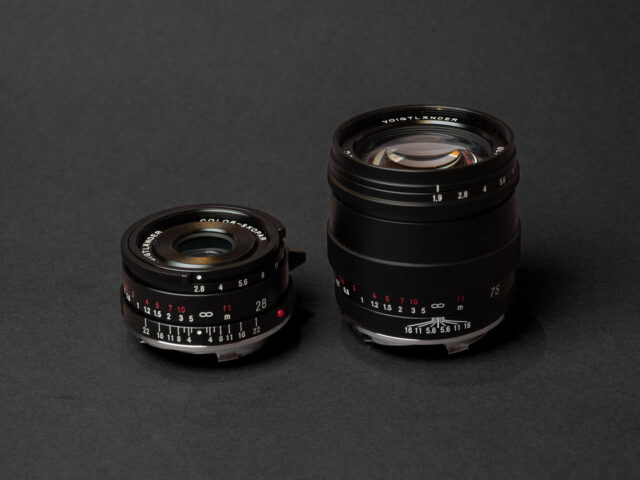
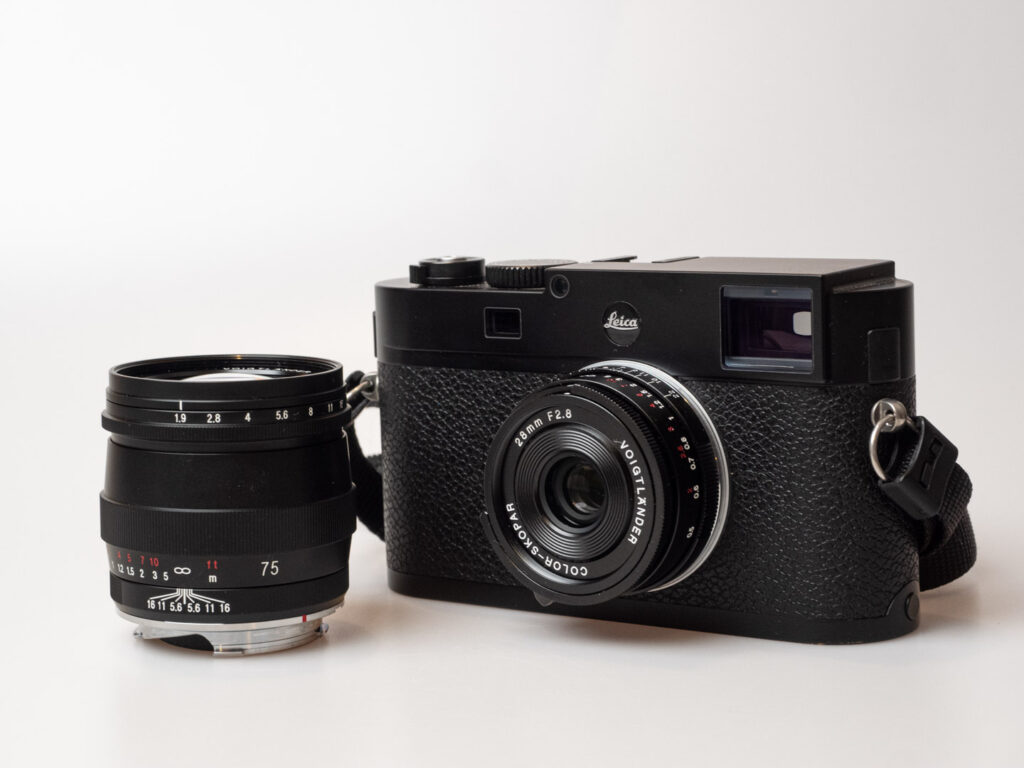

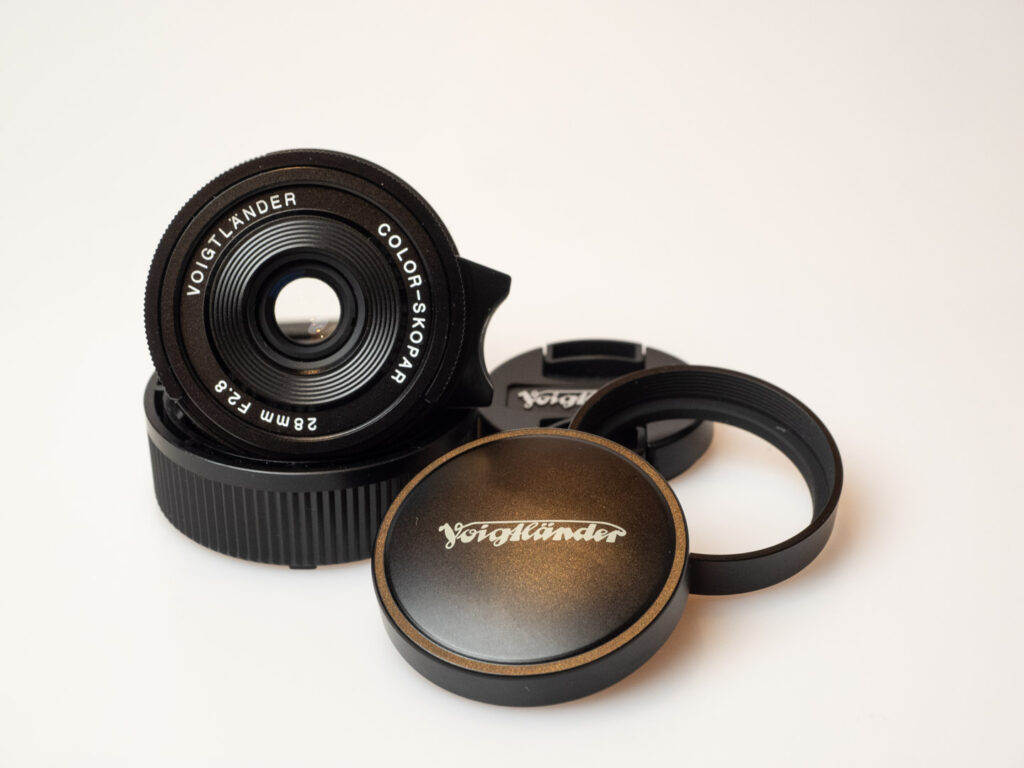
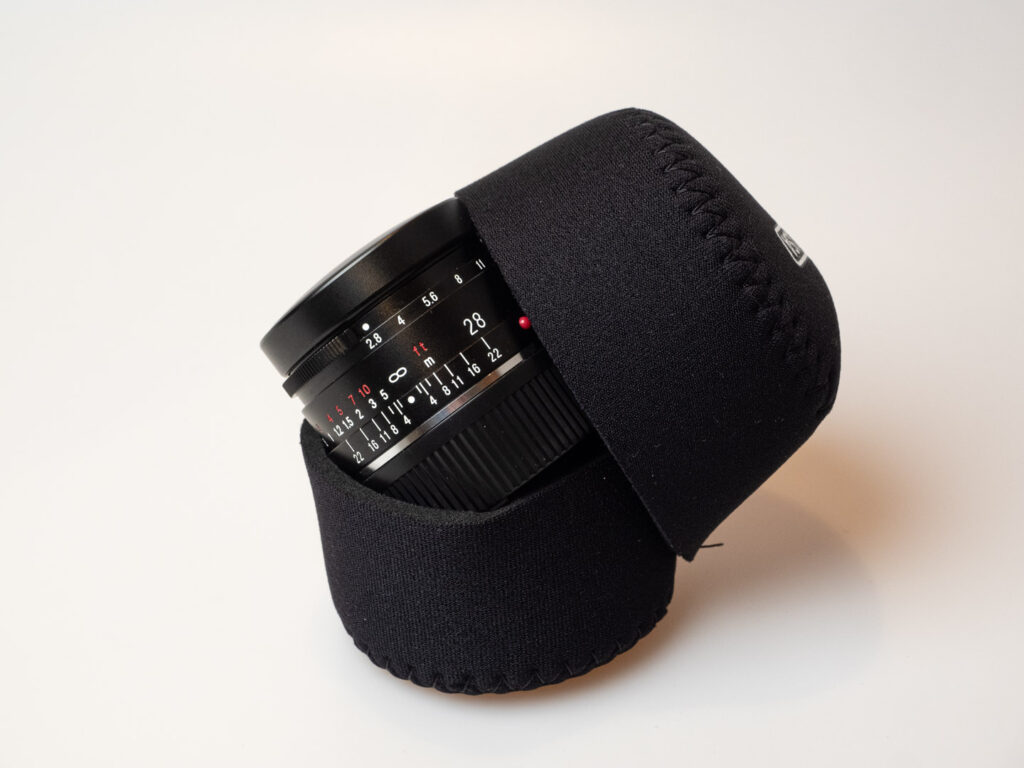
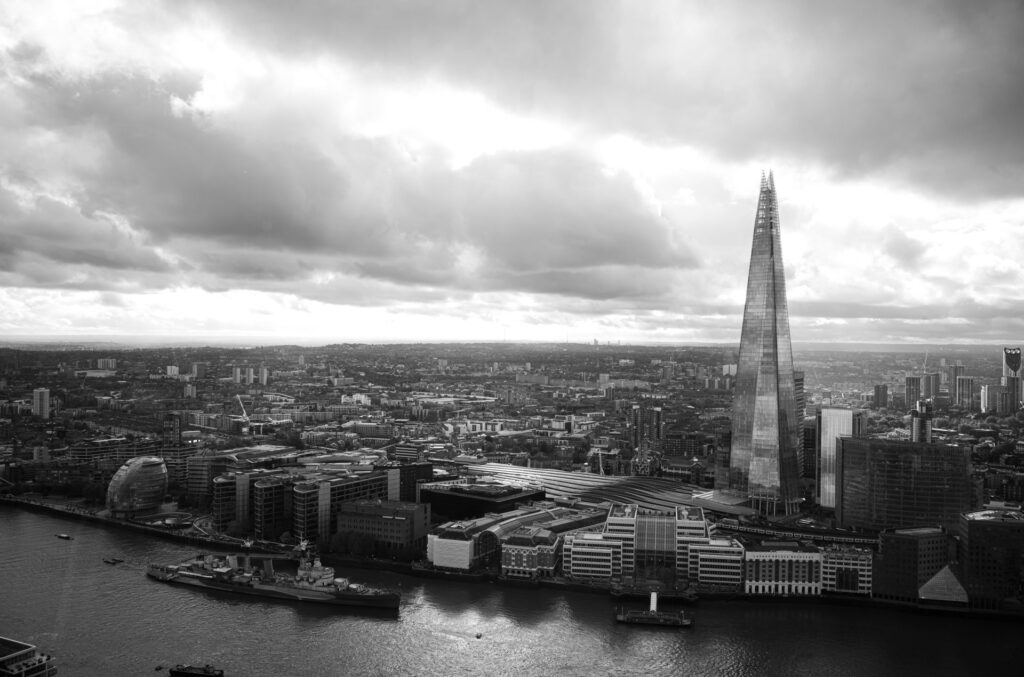
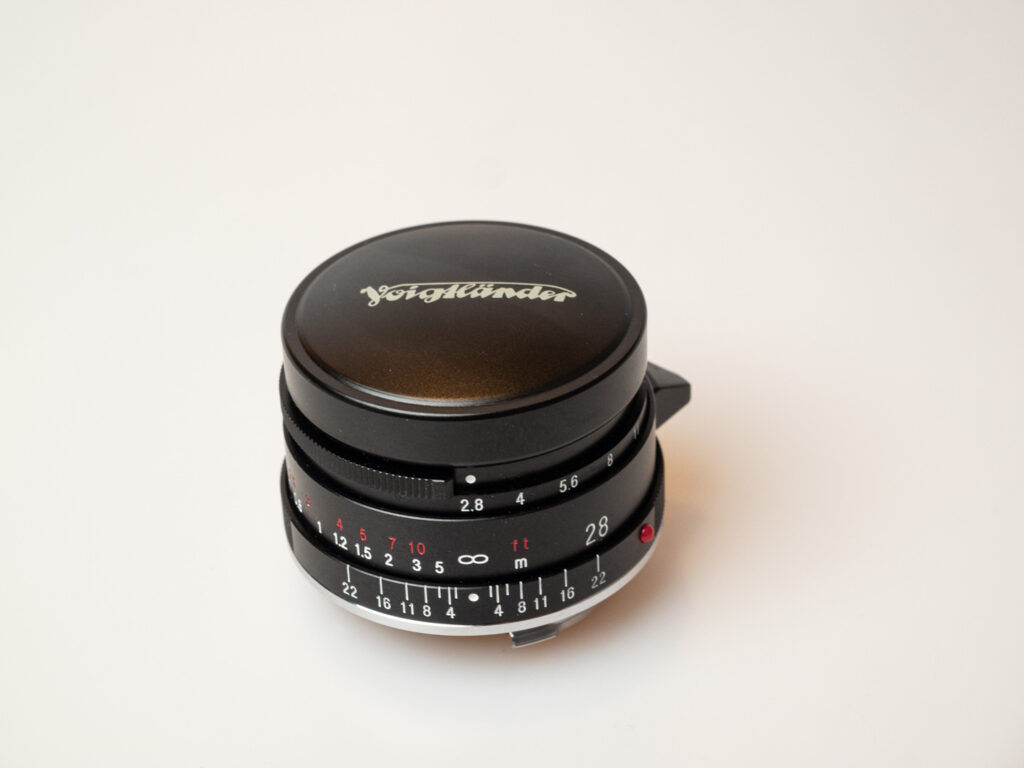
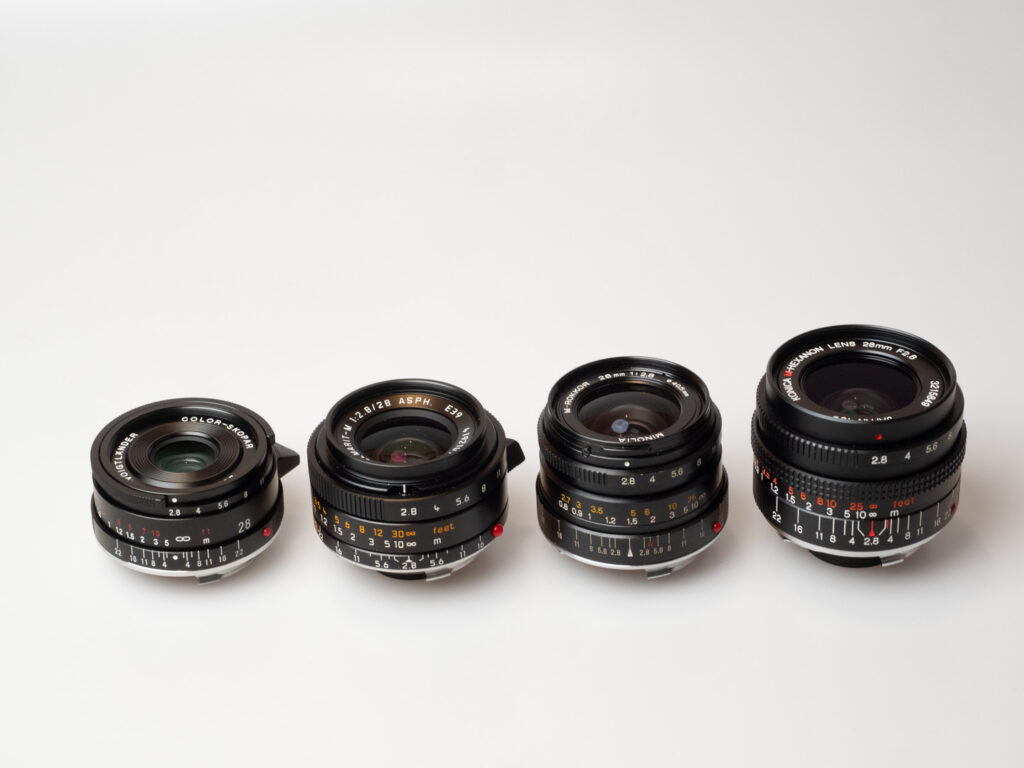
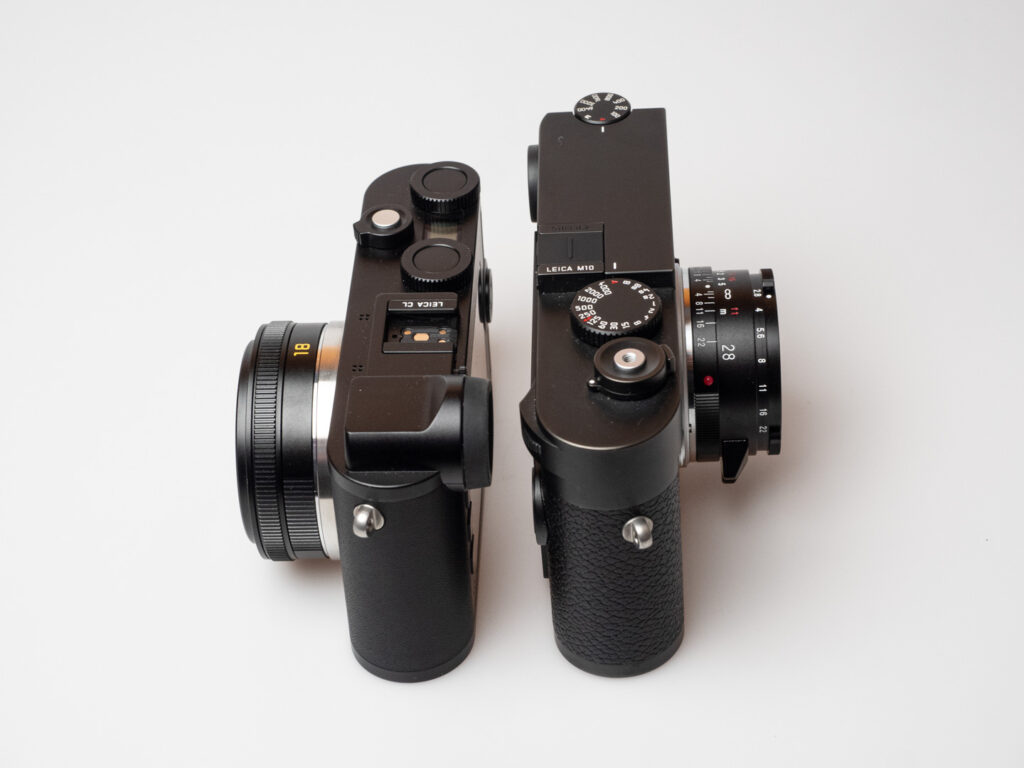
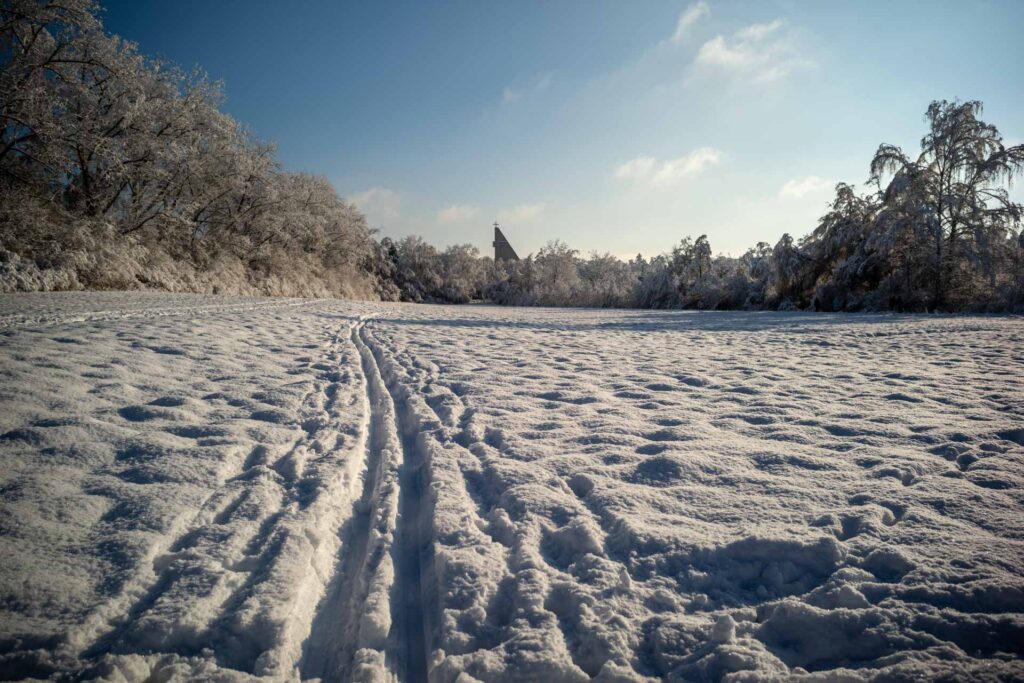

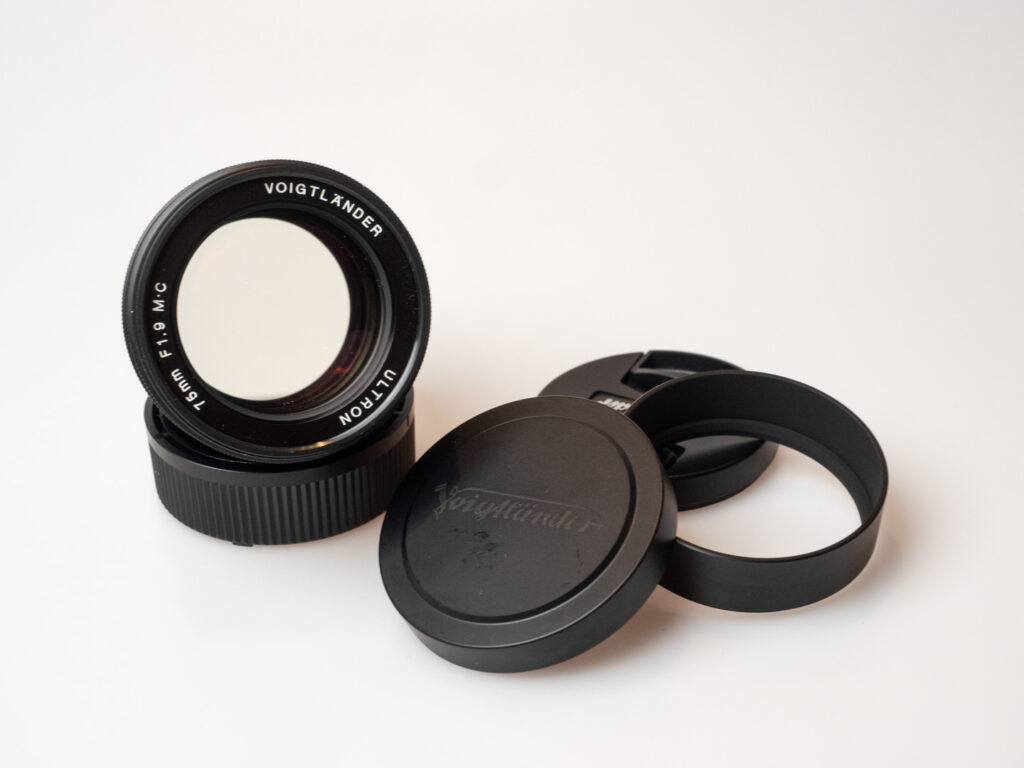
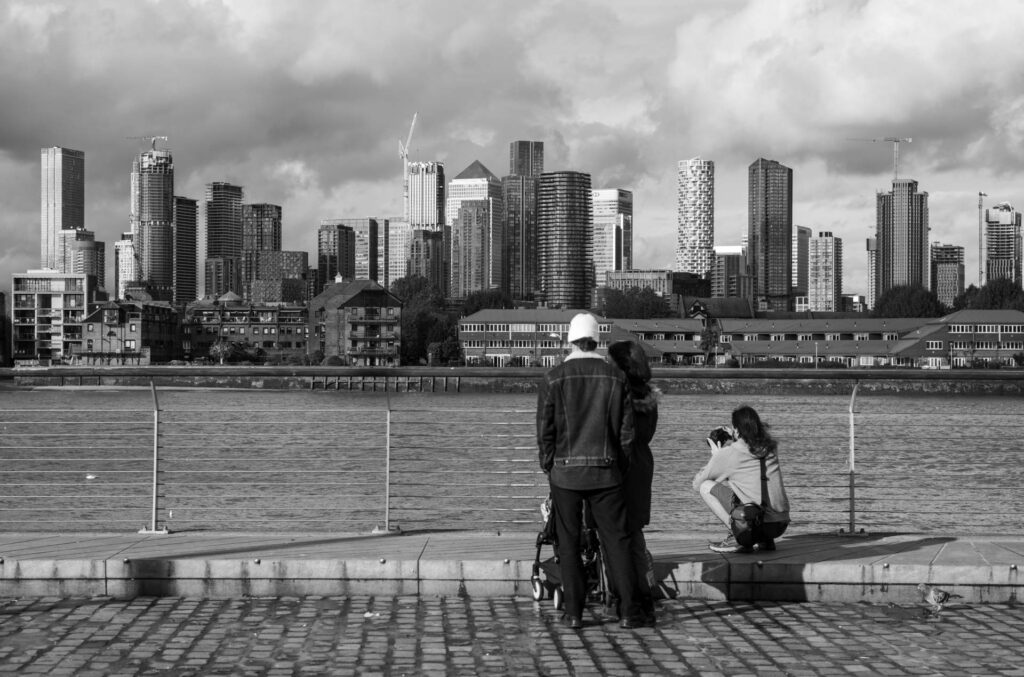
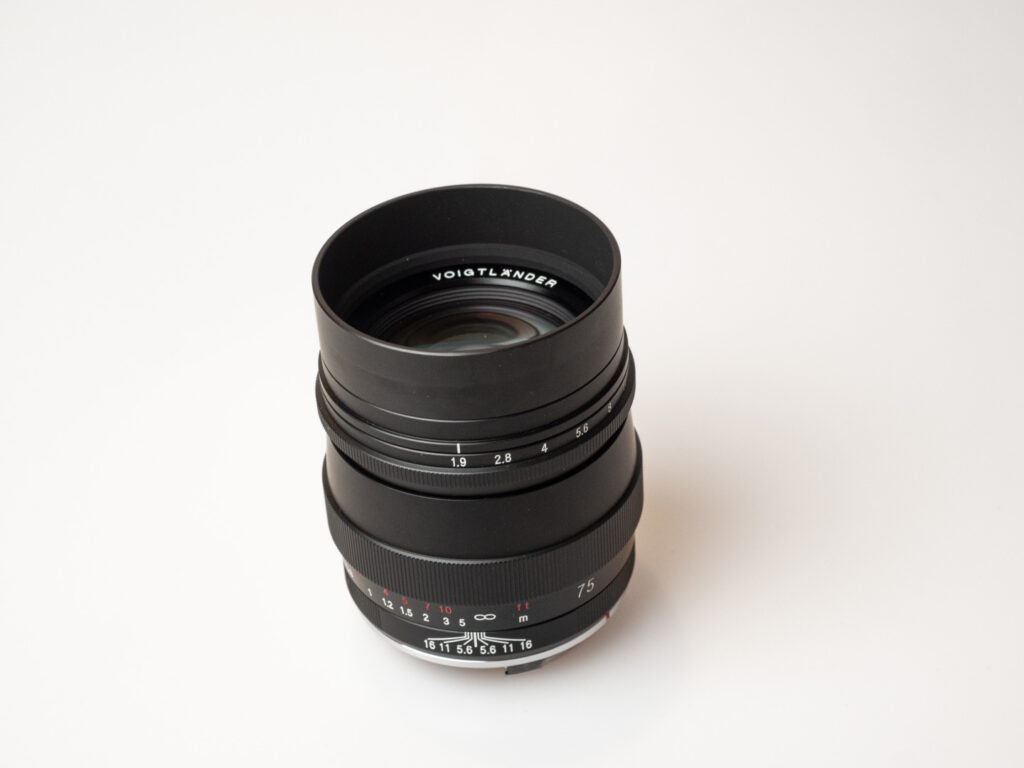
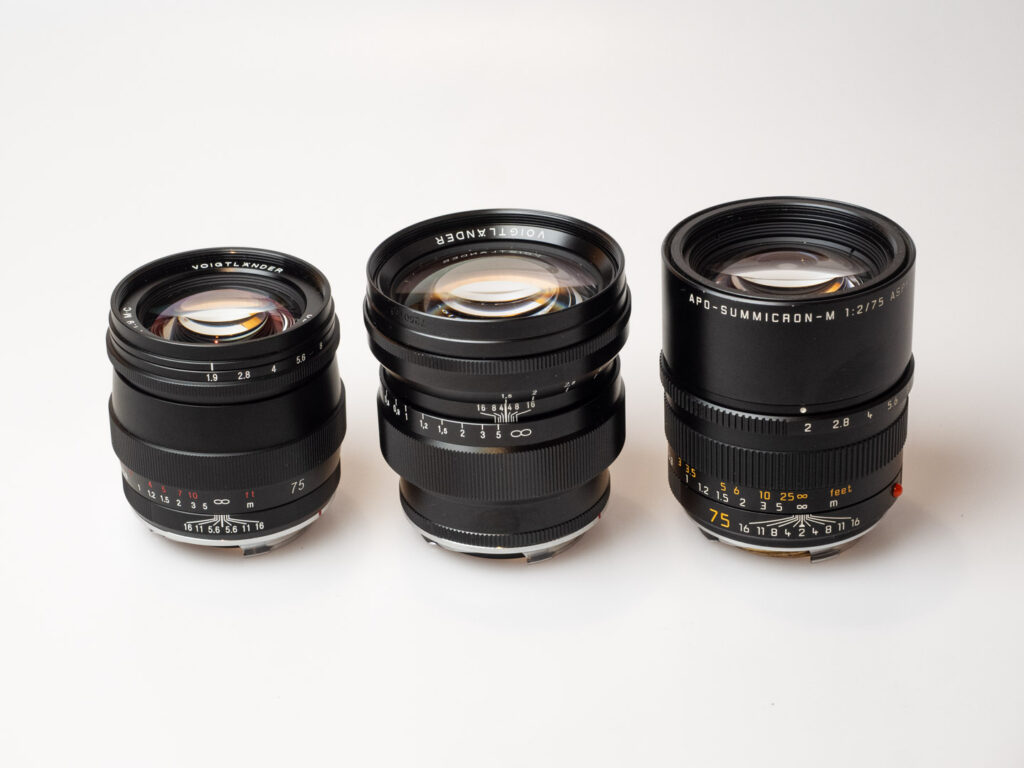
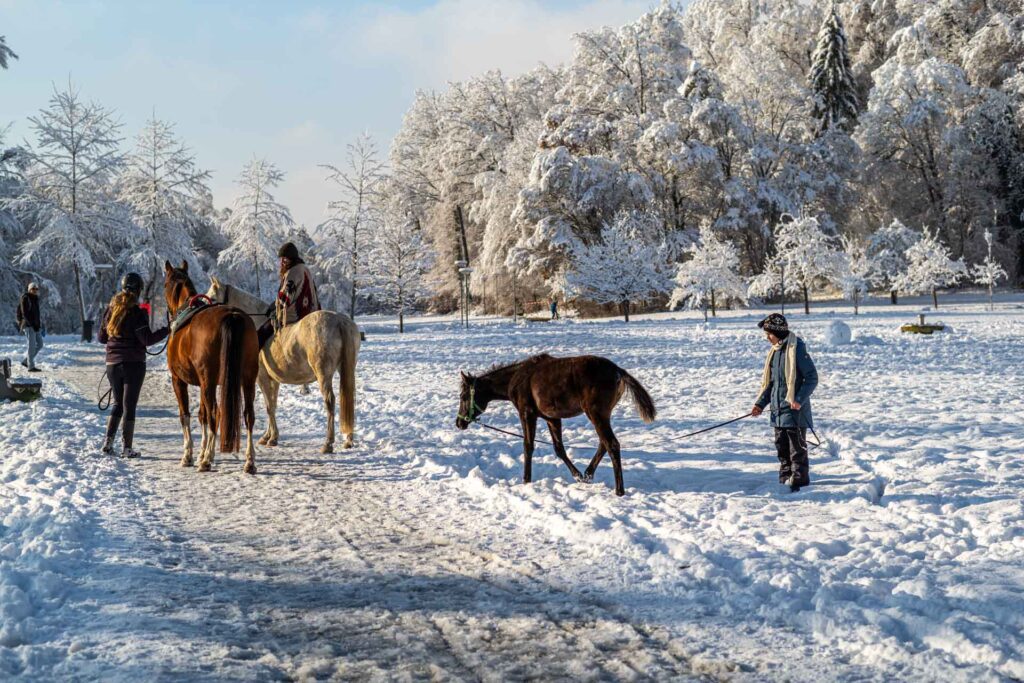




I would definitely be on this set up if I could see the 28 lines with my glasses. I went with 35/90 to get a similar spread and 100% happy. I shot zooms for a minute there and I definitely feel that a simple two lens kit with this absolutely clear FOV disparity is where I want to be. Plenty of compositional variety but zero chance of focal lengtb paralysis.
Great article but you skipped over one of the best features of the 75 1.9. Its minimum focus distance. Stopped down (even just one stop) it gives many more photo opportunities simply not available with other m mount lenses without carrying another lens.
Anyway once again great article and I’ll definitely be playing more with just carrying the 28 and 75!
Thanks for highlighting this, James. I mentioned it, but not as a specific feature. Maybe this is mainly because I use the lens with rangefinder cameras and optical viewfinder, which are limited to 0.7 metres as you know. But you are right, with live wiew or an electronic viewfinder, this opens new opportunities. So, thanks again for adding this – and have fun with the 28/75 combo! It is a great travel and reportage outfit! All the best, JP
An excellent review and series of images. I suppose these lenses must work wonder on mirrorless cameras as well.
Thanks again for Jörg-Peter for your dedication with the M files
Jean
Dear Jean, you’re welcome. Many Voigtländer lenses are superb indeed. However, especially with wide-angle lenses, careful testing is advised on mirrorless cameras (well, Leica M models are mirrorless as well, but I know what you mean). If the camera has a thick glass package on the sensor, even an otherwise brilliant wide-angle lens can show poor performance. But that is, as you know, the fault of an inappropriate lens/camera combination and of the lens itself… All the best, JP
Not really the focus of this article, but thanks for the introduction to the OP/TECH pouches! I wonder if the one pictured above would house my 50mm Summicron (11819)? That would be incredibly convenient considering my 28mm Elmarit would also fit. I must try these out! 🙂
Thanks, Brandon, for your feedback. I don’t have this lens at hand so I can’t test it. The OP/TECH pouches come in several sizes, so it should be easy to find a suitable one. The second smallest size, the 253, has the same diameter but is longer. But given the 75/1.9 fits in, it might be already too long for your beautiful Summicron. Best wishes, JP
Hi J-P,
I can’t speak about the Voigt 28mm, as I hardly use 28mm (except for the teeny Minolta 28) but I do own and use the Voigt 75mm f1.5 (..and the really brilliant Leica 75mm f2.5!..) and that Voigt 75 f1.5 is a really great lens.
(Incidentally, I must take issue with your description, in your review of the 75 f1.5, in which you say “..The lower-right area is significantly obstructed by the lens, even without the hood. With the hood attached (and the necessary mounting ring), about 20 per cent of the image is blocked”. I don’t use its lens hood, nor its “..necessary mounting ring..”, and I find that the f1.5 blocks just a teeny bit of my M10 finder; too small to be really noticeable!)
You say “..The Voigtländer Ultron 75/1.9 will see more use for portraits and unconventional landscape projects, but it will also continue to remind me of the impeccable qualities of Leica’s APO-Summicron-M 75”.
Yup, as does the the Voigt 75 f1.5 ..which gives just a little more out-of-focus ‘bokeh’ than the Apo f2, but otherwise its results are pretty much indistinguishable (I find, anyway) except for a bit of vignetting with the Voigt..
The Voigt lenses really do give the Leica lenses a very good run for the money, and, of course, at a fraction of the cost.
Dear David, thanks for your feedback! Viewfinder blockage is always somewhat subjective, and this is why I started to supply images that do at least give an impression of how (bad) it is. Not using the lens is always an option, sure, but many photographers prefer this extra bit of protection against stray light. – I can only agree with your general remarks about Voigtländer lenses. We can be glad they are around. Maybe Cosina/Voigtländer does more for the survival of the M system than we assume… All the best! JP